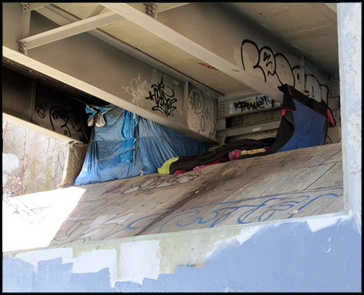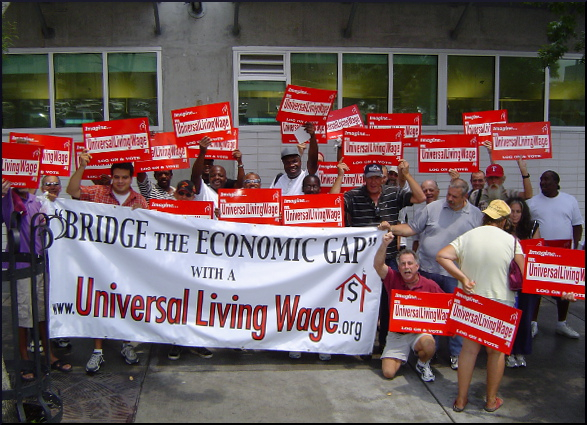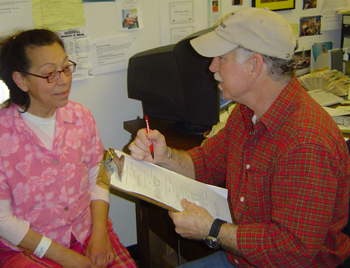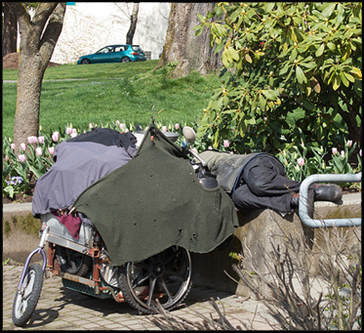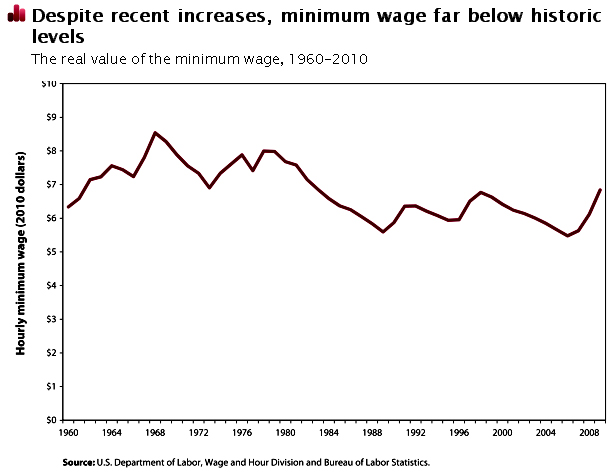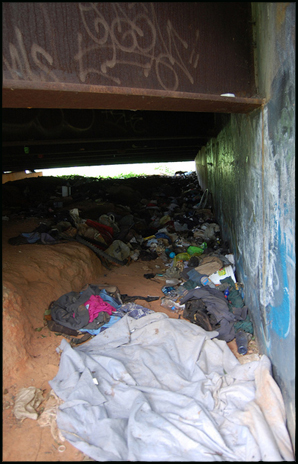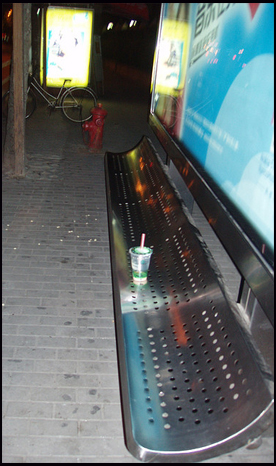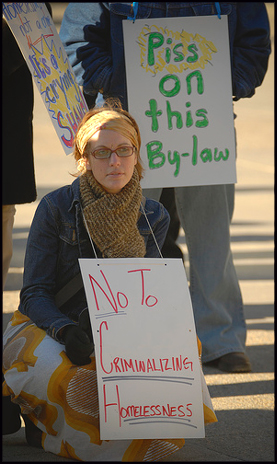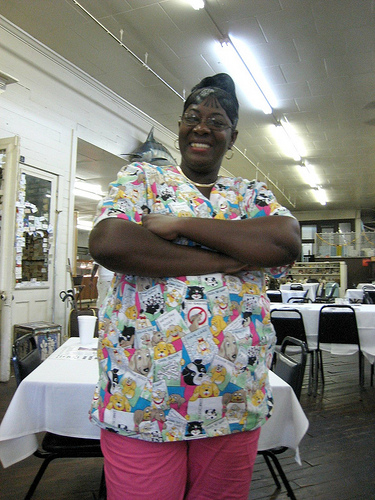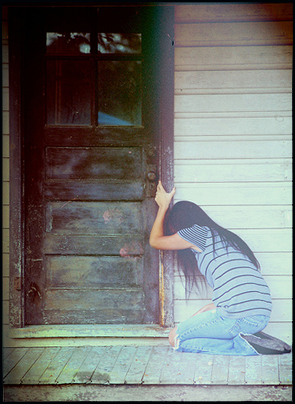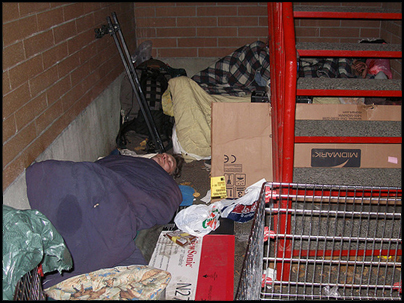
Joseph Krauss is one of the journalists who have written about the Housing First concept as practiced in a particular place. In Washington, D.C., the nonprofit organization Open Arms Housing administers a building with 16 single-occupancy apartments, three of them wheelchair-accessible. Each efficiency apartment has a full kitchen and bathroom. On each floor there is also a community room with phones, TV, computer, and space for residents to gather.
Krauss interviewed a resident who remarked on a little-noticed aspect of the housing process, namely, how it can take many months simply to mentally adjust to the fact that one is no longer homeless. Moving from the street into a safe, secure environment is of course a huge positive step, but it is also a culture shock. It can be just as disorienting as the original change from housed to homeless was, and a person needs to become acclimated. The women of OAH are doing well, and some are even employed.
Open Arms Housing was established in 1997 to serve the most vulnerable women, who are least likely to benefit from other programs because of their serious problems. Apparently, it took 12 years to get to the point of being able to actually house people, which began in the fall of 2009. To monitor and assist the residents, there are staff members; live-in volunteers; and volunteers and interns who come and go. OAH is interested in developing methods that can be replicated anywhere. Its “Philosophy” section on the website states,
Our model rests on the premise that stable, safe housing is necessary to promote the physical and emotional well-being of all people. We operate under a Housing First approach which holds that all individuals are entitled to safe and decent housing and that access to this housing is not contingent upon participation in services. Those services can come later, but HOUSING IS FIRST.
Krauss also discusses says the 100,000 Homes Campaign, saying,
Under traditional federal housing programs, applicants had to spend years on waiting lists and were barred from housing by drug or other convictions, a process that offered little hope for the most vulnerable. The Housing First approach, by contrast, sees permanent housing and supporting services as prerequisites for curing the other ills that plague the homeless.
The strategy of “housing first” is to identify those who are at most risk of dying on the streets, namely, addicts, the mentally ill, and those with chronic physical ailments, and move them into permanent supportive housing. In any given community, there will be people who disagree, and the protests are generally based on moral grounds. The dissenting voices usually say something like, “Why should we first take care of addicts, alcoholics, and burn-out cases, when there is so much need among deserving young families, young adults, and others who actually have some potential?”
To save the chronic, apparently hopeless cases first is a counter-intuitive solution for anyone whose subconscious attitudes were formed from the battlefield model for medical triage. In a combat situation, the most seriously injured soldiers will probably die no matter what, so they are left to their fate. The person for whom immediate care can make a difference will get the attention, rather than the grievously wounded. Precious limited resources are used for the curably injured. (In fact, a clever assailant takes advantage of this by deliberately designing weapons that will injure rather than kill, to tie up as much of the enemy’s transportation and manpower resources as possible.)
But, fortunately for all of us, this battlefield model does not apply in the area of homelessness. The Housing First model, if it works out the way it should, ought to free up even more resources for those with a chance to be “saved,” as defined by the usable opportunity to become productive citizens. Life does not often present us with such a clear-cut instance of how doing the right thing can also be the economically efficient thing.
The reason for this is obvious, once the potential costs of emergency medical care and law enforcement are factored in. Arresting people who are experiencing homelessness is a no-win situation for society. They can’t pay fines, so they go to jail, to be housed, clothed, guarded and fed at a net loss to the public wallet. A comment on this article, from a citizen named Paul Seldon, notes,
The cost of leaving someone to survive on the street is enormous: $40,000 to $50,000 a year… The cost of moving them into supportive housing may be close to the same during the first year, but decreases every year after.
Another objection brought up by community members to the “housing first” model is the fear that it will be implemented in the wrong way, namely, by de-funding other programs, as Krauss says happened our nation’s capital:
When Washington’s then-mayor Adrian Fenty embraced the Housing First approach in 2008 he also closed a major shelter downtown that had provided 400 beds, pushing dozens of homeless people into an adjacent park.
In other words, it’s a big mistake to pull resources from emergency shelters, food programs, and other services, right away. It’s necessary to wait until the city’s budget begins to reflect the savings from housing the chronically homeless.
In an earlier post, we quoted an official who noted that although the chronically homeless constitute only one-fourth of the total, a disproportionate amount of public funds are spent on hospital emergency treatment, emergency shelters, and the dealings of this group with the legal system. Supportive housing, including treatment and counseling, has been found to result in a 40% saving.
We also looked at the At Home/Chez Soi program in Canada, where the savings are apparently much greater. The numbers mentioned there were $100,000 per year to keep a chronically homeless person on the street, versus $18,000 per year to provide supportive housing. One of the longest-running “housing first” initiatives in the U.S. is the Lamp Community in Los Angeles, where the motto is “No strings. No barriers. No intermediate steps.” The Lamp Community was founded by a former nun in 1985, and has been caring for the addicted and the mentally ill ever since.
By the way, House the Homeless was the first organization to call for Housing First, even to the point of putting it into our name when we formed in 1989.
Reactions?
Source: “New approach brings US homeless in from the cold,” NewsYahoo.com, 02/06/11
Source: “Our Services,” OpenArmsHousing.org
Source: “Our History and Mission,” OpenArmsHousing.org
Source: “The Model,” 100Khomes.org
Image by quinet (Thomas Quine), used under its Creative Commons license.

